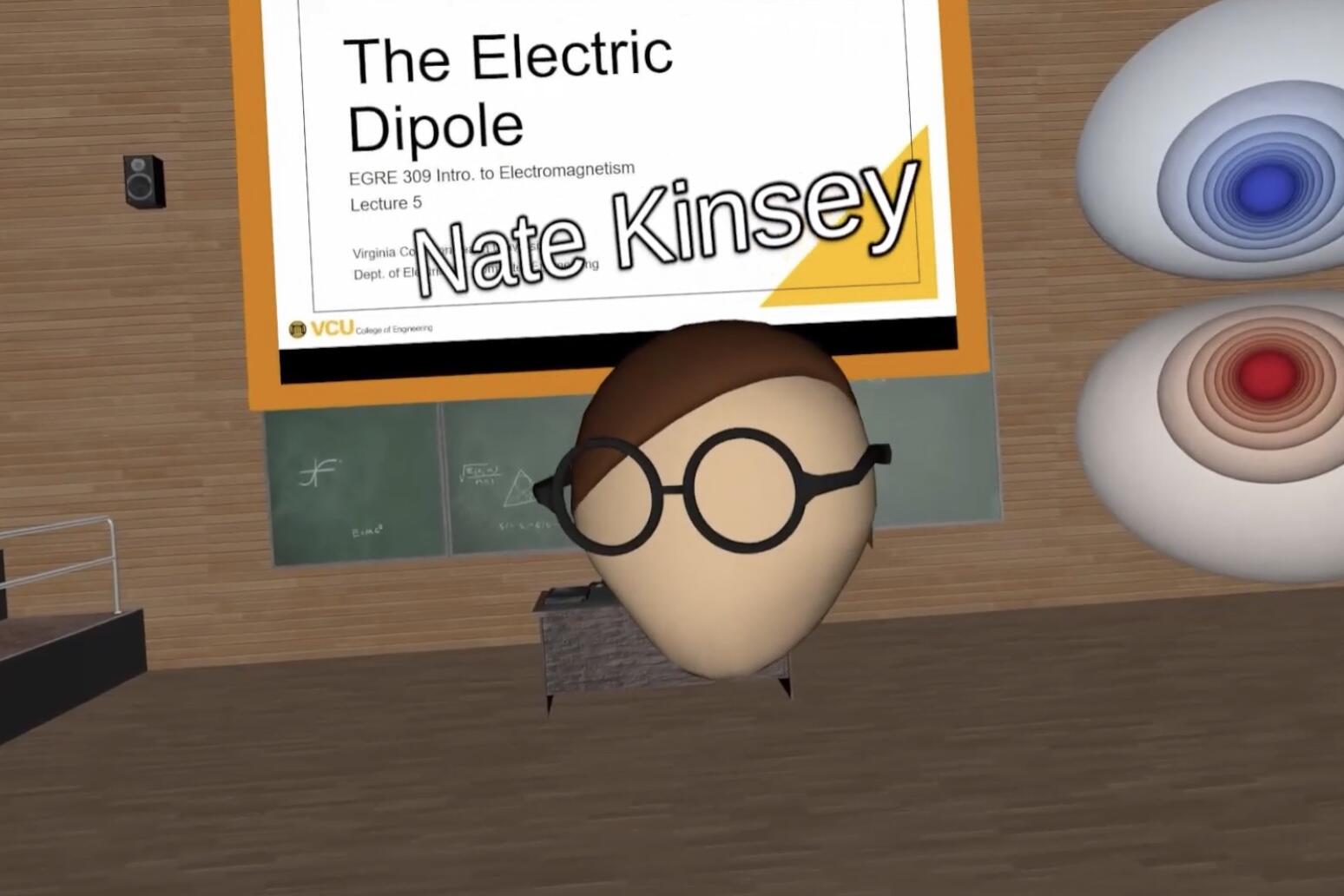
Nov. 16, 2021
Making it (virtually) real
Share this story
For years Nathaniel Kinsey, Ph.D., has been using visual simulations to make concepts easier for students to understand, but now he’s taking that idea into a whole other dimension: virtual reality.
The associate professor in the Virginia Commonwealth University College of Engineering’s Department of Electrical and Computer Engineering has long noticed that even strong math students would “miss the picture” behind Wi-Fi, EZ passes and other electromagnetic processes. In response, Kinsey created interactive computer simulations that let students “lift the curtain” and see advanced math and physics concepts in action.
Their success made him wonder about other possibilities. “What if you could click on a dataset and pull it into VR? Then you could stretch it, rotate it, move it around, show it to other people, cut it — all while playing with the data,” Kinsey said.

Unexpected help came when Kinsey’s teaching methods were featured in a supplement to IEEE Spectrum magazine. Simon Woodruff, Ph.D., co-founder and chief scientific officer of data visualization startup SciVista, saw the article.
Woodruff said he was “just looking for papers on electrodynamics and, oh, man, I read the final paragraph [about Kinsey’s simulations].” Kinsey’s teaching approach was “pointing to the future of education,” he said, so Woodruff offered to help Kinsey turn screen-based simulations into immersive VR experiences.
Woodruff and Kinsey have now prototyped a VR platform that takes electromagnetics simulations into VR, so people can play with them simultaneously. Future enhancements include virtual lecture rooms where participants’ avatars can play with 3D models in real time. Here’s what that looks like.
“What if you could click on a dataset and pull it into VR? Then you could stretch it, rotate it, move it around, show it to other people, cut it — all while playing with the data.”
Nathaniel Kinsey, Ph.D.
The COVID-19 pandemic heightened the need for better distance-learning approaches. Zoom and videos can be flat and isolating, “but in a VR lecture room setting, your digital persona can be there. You turn left and right, see other people and their notes and see what they're doing,” Kinsey said.
VR simulations will also augment in-person classes, Kinsey added. He sees a day when labs could be digitally delivered to students to complete collaboratively in VR, with follow-up work taking place in the research facility.
Kinsey and Woodruff will continue to develop instructional VR resources for electromagnetics instruction. Kinsey thinks the tangible benefit will be invaluable.
“Tools like these make the math less ‘procedural,’” he said. “In seeing how it describes a physical phenomenon, students gain an intuitive understanding of something very complicated. And this makes them better engineers.”
Subscribe to VCU News
Subscribe to VCU News at newsletter.vcu.edu and receive a selection of stories, videos, photos, news clips and event listings in your inbox.






